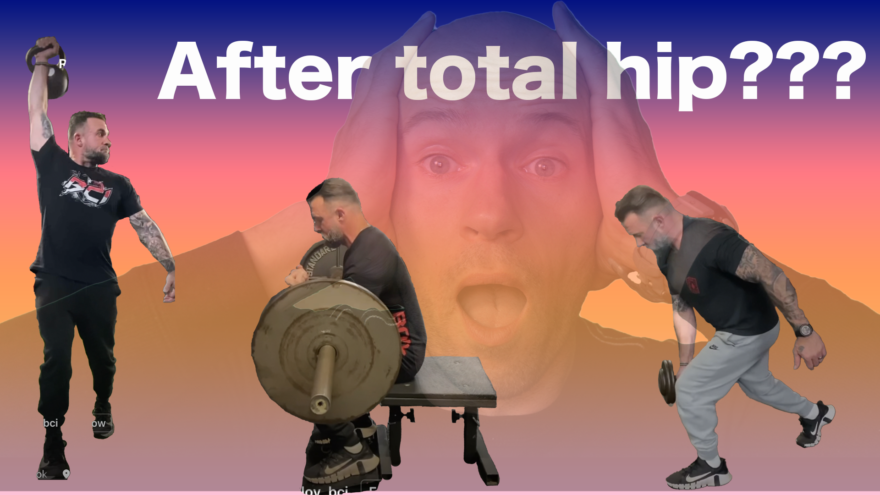Table of Contents
How to coach and program for someone who is very strong and stiff
There’s a TON of information out there on how to best help people who have limited mobility, but very rarely do we see the practical application of it.
Thanks to my boy Andy McCloy, that changes today.
Andy is a FREAKY strong strength coach who unfortunately had two total hip replacements. He wants to train pain-free.
Here’s how we are doing it.
Check out the video and post below, let’s dive in!
Case overview
Andy has a long training history along with some fighting. He had two total hip replacements a couple of years ago. Goals are to maintain his fitness levels, train pain-free, feel more fluid with walking, and overall move with less stiffness.
Side note, give him a follow when you get a chance 🙂
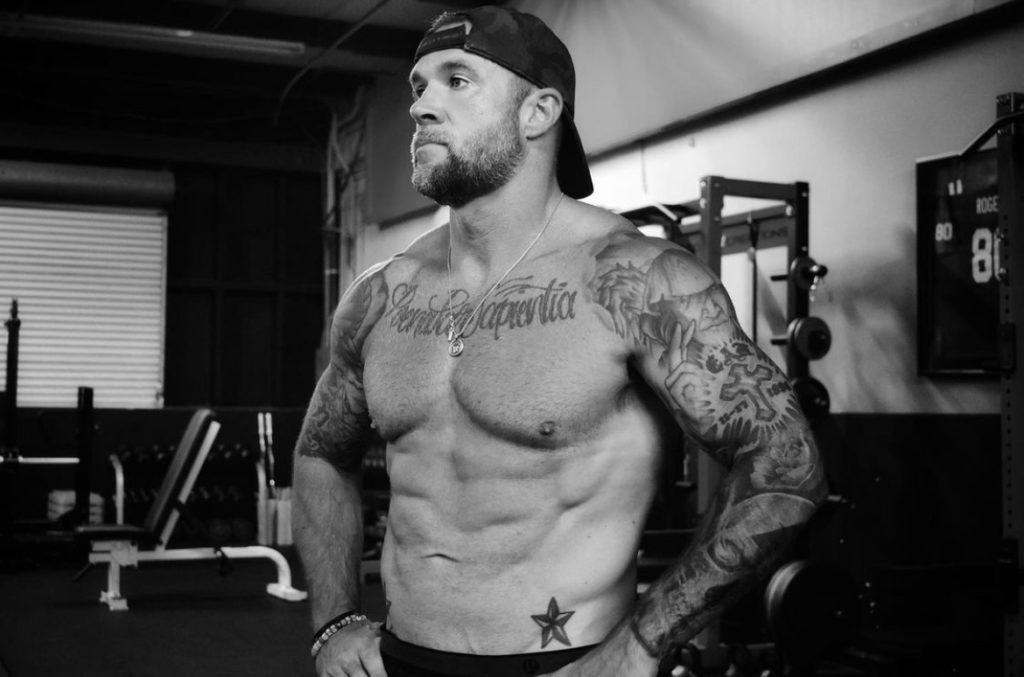
Objective findings
Andy’s initial remote consult presented as follows:
| Test | Left | Right |
| Infrasternal angle | wide | |
| Shoulder external rotation | 35 | 40 |
| Shoulder Internal rotation | 30 | 25 |
| Hip flexion | 85* | 90 |
| Hip external rotation | 25 | 20 |
| Hip internal rotation | 5 | 10 |
| Straight leg raise | 60* | 60 |
| Toe Squat | full | |
| Squat | Above paralell |
As a wide infrasternal angle, we would expect Andy to have more available internal rotation than external rotation, but that’s not the case.
Instead, Andy has the reverse–more external rotation. Given that he has an ability to touch his toes and a fairly good straight leg raise, it is likely that Andy is picking up this range by flexing through his spine. In fact, this is a common movement strategy we see from him.
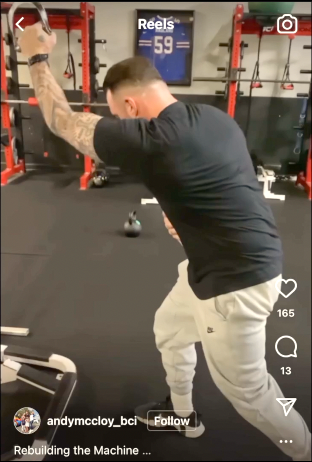
This typically presents with a swayback posture, but the interesting thing is often a swayback has a depressed sternum. Andy does not, as there is not a magnification of upper body internal rotation. Instead, Andy is likely pushing the thorax and pelvis forward and simultaneously.
Yet at the same time, he has a drop off of total rotation.
Ideally, the hips should have a total rotation of 100º (60º external & 40º internal) and the shoulders around 160º-180º (90º external and 70º-90º internal). Here, we can see that Andy’s total rotation is around 30º in the lower body and 60º in the upper body.
If I were to classify Andy, he presents with the following presentation:
- Anteroposterior compression (increased muscle activity everywhere which reduces overall range of motion)
- Forward translation of thorax and pelvis, which provides greater external rotation than internal rotation for wide infrasternal angles
Interventions
Andy is training with me remotely. His program is composed of 3 lifting days and 2 conditioning days.
Conceptually, most of the movements focus on the following actions:
- Pushing the hips back, yet displacing the pelvis vertically
This action is aimed to reduce the forward pelvis translation, which is the first step needed to restore hip range of motion.
Typical stacking drills end up causing Andy to push the hips forward and aggressively pull the ribcage down. This strategy rounds the end back and does nothing to help our boy move mo’ betta.
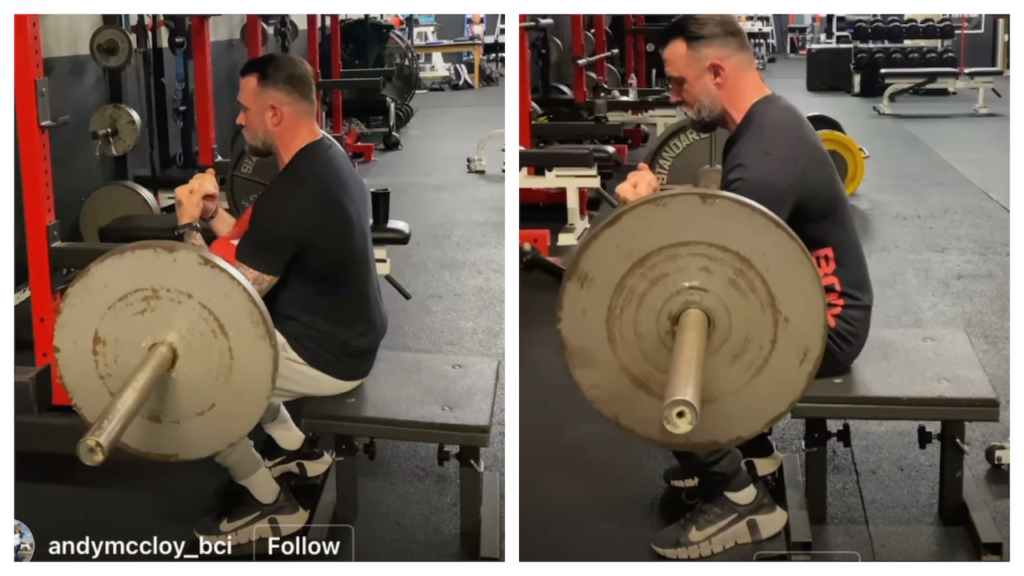
If you check out the picture above, you can see how Andy is more rounded on the left in comparison to the right. This is our boy translating the hips forward, hence why he has a bit more rounding on the left vs the right.
Conversely, when he pushes the hips back, he minimizes the forward translation strategy.
- Reduce overtucking and ribs down
This focus is much like the issue above, but I had to call awareness to Andy to not do these actions. These strategies contribute to Andy rounding in many moves, such as a superhero split squat.
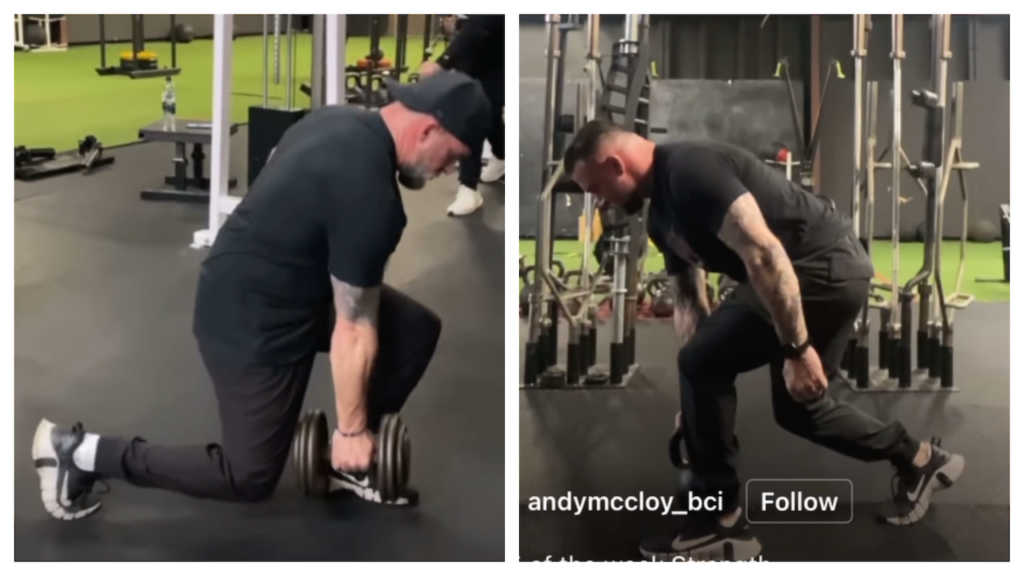
As we can see above, Andy appears rounded excessively on the left. When I pried a bit, I found out that he was pulling the ribs down and tucking the hips. I basically told him to not sweat those cues, and the right picture was a much better version.
- Move with little tension
When you see someone who has multidirectional limitations, you can bet your bottom dollar that there is increased muscle activity at rest.
Simply cueing during certain moves to move with less tension, stay relaxed, can help reduce some of this muscle activity.
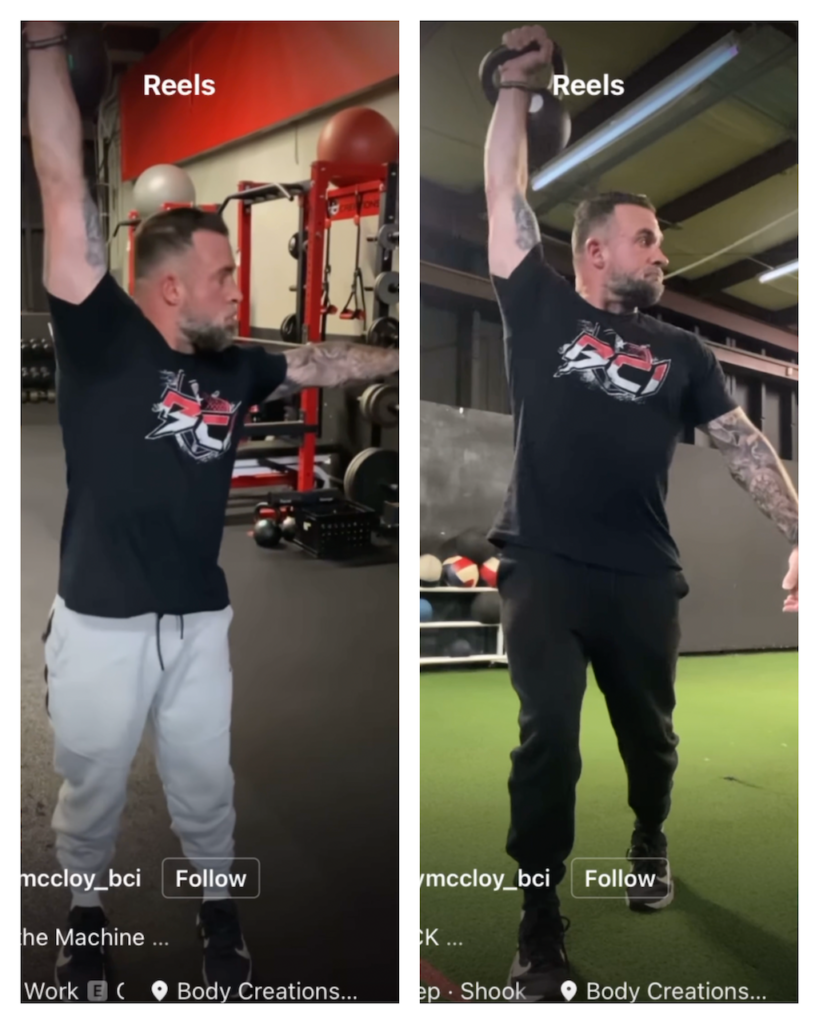
You can see above that Andy is orienting most of his body to the left to create the turn (see where his shirt is facing).
Conversely, the right photo shows a relaxed arm and a more “isolated” turn of the head. This right here big fam, is an example of better relative motion.
Sum up
Those are some of the big ways that we have reinforced movement capabilities in Andy. Per him, he reports feeling rock solid and is getting a bunch of benefits from these moves.
To summarize:
- Reductions of range of motion + an external rotation-bias in a wide ISA = anteroposterior compression while translating the body forward
- With someone who presents with the above, the key is to push the hips back and create as little tension as possible
What struggles have you had with someone who presents similarly to Andy? Comment below and let the fam know!
